|
Intern Alan Shi:
This internship was a great experience and different from others I have had. During my time at IRIS/PASSCAL I learned many different skills and relearned old ones. My internship was with the Polar Department, which as it sounds, focuses on experiments in both the Arctic and Antarctic regions.
|
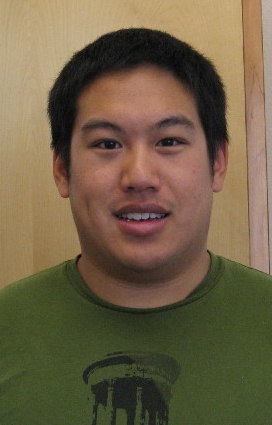
|
|
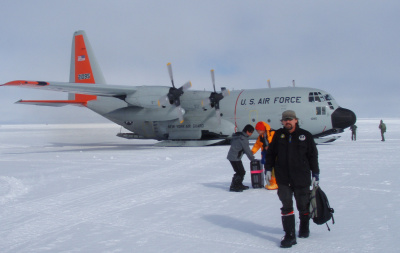
|
The trip itself started July 10th with a flight to Albany, New York. There, the 109th Air National Guard sends the majority of the researchers from the United States to Kangerlussuaq, Greenland.
On July 11th I boarded my first C-130 for Kanger (Kangerlussuaq). The C-130s were fairly comfortable, but unfortunately 37 passengers and 2 pallets of cargo made the interior cramped. The plane itself wouldn’t stand out much from other C-130s, except for the ski platforms attached to all of the wheels.
|
|
The first stop for the team was Kangerlussuaq, Greenland:
The main building for all the researchers in Kanger, is the Kangerlussuaq International Science Support (KISS) building. Unfortunately I spent more time than expected here, hiding from mosquitos and waiting for my flight to NEEM. I was scheduled to leave for NEEM on the July 12th. Due to the ice melt, the top 1 meter of the skiway at NEEM had turned to snow. Delaying the flight, by July 15th, only the top ½ meter was snow as the temperature slowly dropped. Even when the ice was frozen, ground fog created by the warm air cause a “no fly” condition.
|

|
|

|
A warm season held many surprises, and caused many delays for the team. Alan writes:
Surprisingly, Kanger had warm weather when I arrived, something I didn’t expect due to its latitude. The unusually warm weather throughout Greenland had caused some drastic effects. The local river of Kanger has swollen to two times the previously measured maximum. For the only bridge of the small town, this caused issues. The town had tried using machinery to place dirt on the bridge to protect it from the rising river. This unfortunately led to a “front loader” piece of machinery to fall into a sinkhole in the middle of the bridge.
|
|
The team finally was able to make its way to NEEM (North Greenland Eemian Ice Drilling):
It wasn’t until July 16th that Kristin decided that the skiway would support the weight of the plane, and the flight to NEEM was made. Even that decision was made at the last minute, giving us a five minute warning as all the travelers piled into cars and headed to the airport. The flight we boarded was scheduled as a training mission for the 109th Air National Guard, since it was unclear if we would be able to land due to ground fog.
|
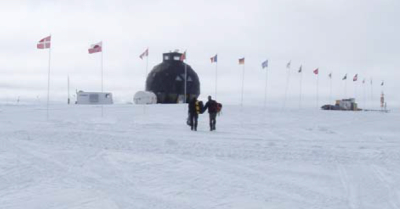
|
|
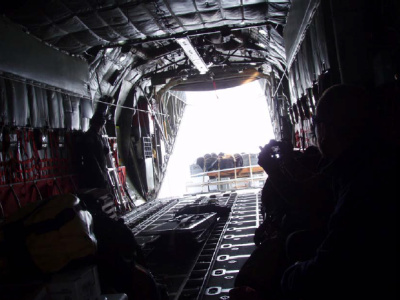
|
The team's fortunes improved, and their equipment and gear were delivered to the ice:
Luck was on our side as during the 3 hour flight, the ground fog dissipated enough to land and the flight crew even performed a combat offload with the pallet when we landed. A combat offload with the pallet entails that the C-130 continue moving after landing, opening the cargo bay doors, and letting the pallet with all our gear slide out the back.
|
|
Alan found that the rugged work environment at NEEM was enhanced with some icy "chandeliers."
The NEEM camp is one of the furthest north research stations in Greenland run by the Danish. One of the main projects at this site was a core drilling operation. I was lucky enough to be present for the final core to be pulled out, ending the borehole. At 2.5 km deep, the drilling has been ongoing project for 6 years. The last portion of drilling had its own drama as a small rock was positioned just right to stall drilling for over 6 hours.
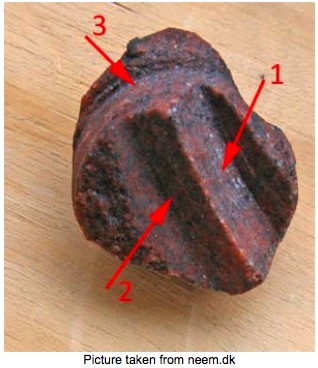
|
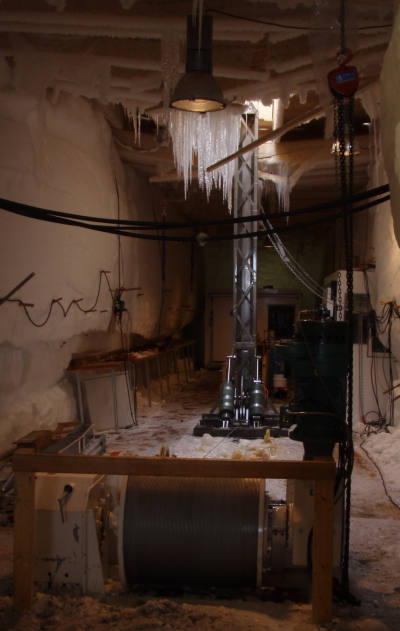
|
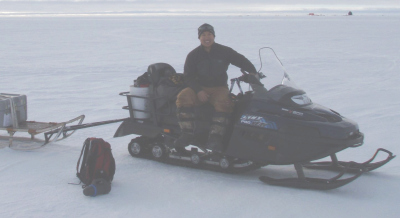 |
Here, Alan takes to the polar ice on a snowmobile. He was working to support the “Greenland Ice Sheet Monitoring Network” (GLISN).
|
|
This "Mash"-style sign adorns the NEEM camp. Alan describes his work duties at the camp:
My own projects were to support Dean Childs as he addressed issues with two sites, NEEM Seismic and GIS-3. With the delayed flight, we now had 2 days to get all the work done. Luckily at that latitude, the sun does not set and work didn’t finish the first day till 00:30 that night. GIS-3 is a high precision GPS station. This station required a snowmobile to reach and needed the most repairs. We had to add 4 new batteries to the system, each weighing 120 lbs. The bulkhead TNC connector was broken and one of the antennas needed to be mounted on a new pole. Unfortunately installing a new pole for an antenna mount requires digging into the snow to place it. In this case a 6 ft deep crater, being careful to avoid any hidden cables and then repacking the snow around a 3 inch pipe. The NEEM Seismic site has one seismic sensor a few meters deep, and an additional sensor down a borehole 300m deep.
|
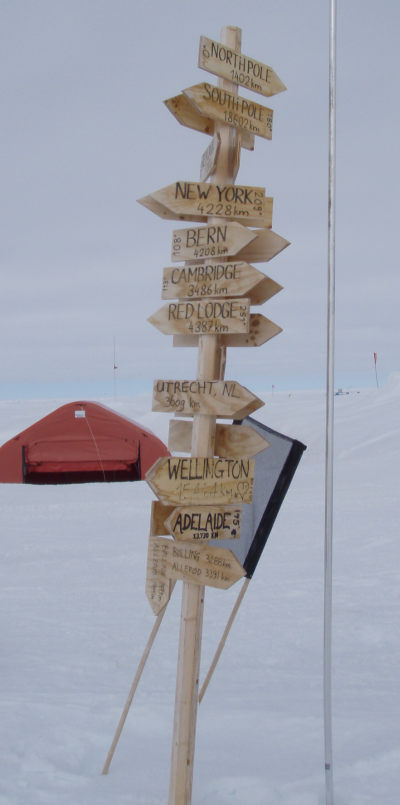 |
|
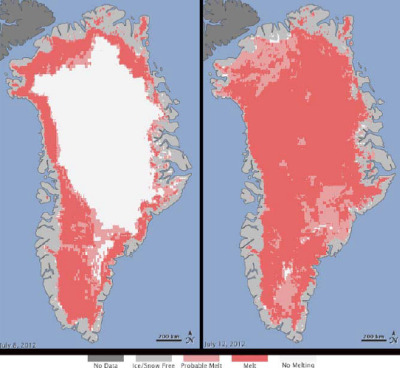
|
Alan found a NASA article that detailed the striking seasonal changes in Greenland this summer:
This image is from a NASA article written on July 24, 2012. It shows the surface ice thawing of Greenland. On July 8th it showed roughly 40% of the ice sheet had undergone thawing, by July 12th that had increased to 97%. When on average only 50% of the Greenland ice sheet undergoes melting during the summer this was a very concerning event. The article describes how ice cores from the Summit research site show a melting event about every 150 years. The last one has been dated at 1889, putting the 123 year difference to now, on schedule with the 150 year cycle.
|
|
At the end of the Greenland trip, Alan got a chance to compare notes with other graduate students:
I was able to stay an extra full day at NEEM and left on the 20th back to Kanger. I was lucky enough to meet many of the graduate students there. All of them were studying different and interesting topics from the firn to ice cores. They came from different countries ranging from Denmark, USA, and Australia. I was also able to spend this day analyzing some data acquired from the NEEM Seismic station I had been working on. The shallow seismic sensors could detect when the C-130 planes landed and took off from NEEM, while the seismic sensor in the 300m borehole had detected the May 20, 2012 earthquake in Honshu, Japan.
|
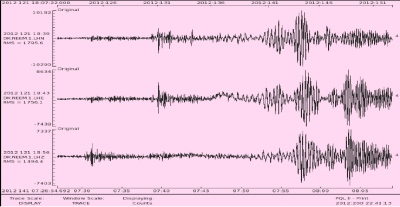
|














